FLYING AROUND THE FARLEIGHS WITH RAY MORRIS
WHAT WAS IT?
Did anyone guess from last month’s cryptic clues - the bird written about by Chaucer, Shakespeare, Anne Bronte, Edgar Alan Poe, and mentioned in The Bible to boot? A once common species now distinguished by being the UK’s fastest declining one, having lost 99% of its population since 1970 and is still declining – the remaining 1% fell by a further 15% of that in 2024! Fortunately, there are signs of recovery since the EU imposed a temporary moratorium on it being hunted as it migrates through France, Spain and Portugal to winter in West Africa, although the ban is being relaxed again this autumn. It is, of course, the Turtle Dove. And the good news is it has been recorded three times this year in East Farleigh and Coxheath after being absent for many years.

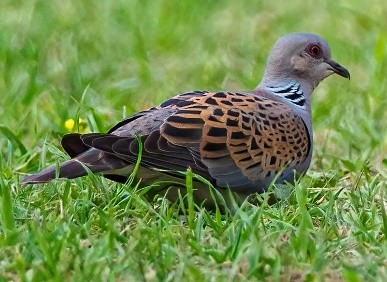
Kent is fortunate in having a third of the country’s breeding pairs, and a fair proportion of these seven hundred are found in the Low Weald around the Marden area. The tall hedgerows, patches of scrubby woodland hereabouts are ideal for nesting. Arable fields (they feed on arable weed seeds) and a multitude of ponds and streams provide the necessary food and water.
But being shy birds, they aren’t often seen; their distinctive turr-turr song (hence their scientific name Streptopelia turtur) is not especially loud and they are one of the earliest performers in the dawn chorus. Commencing before – and peaking between - 5am and 6am their gentle purring tends to be drowned out by louder species and the inevitable traffic noise that comes later.
Help is at hand though as local farmers and landowners are working with a small group of Marden Wildlife volunteers and Kent Wildlife Trust scientists to establish how best to manage their land for the benefit of the doves. To do this, we need to update our knowledge of what the doves need and how they behave: how are they using the landscape now for their breeding needs? To do this we started tracking the doves in 2022 using coloured leg rings and following their movements (and survival) using strategically placed camera traps.
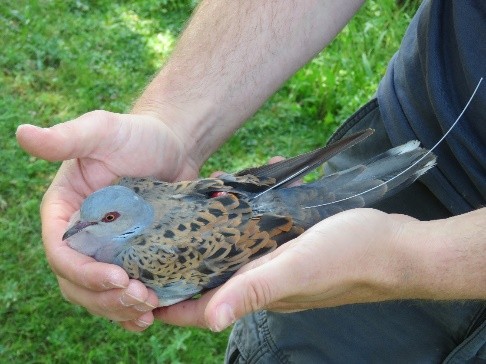
In ’23 we began fitting them with GPS tags. Including this year, we have deployed eighteen tags - not cheap at a thousand pounds per tag.
So far, doves are showing some signs of adapting to the changing environment inasmuch as some are travelling well beyond the traditionally accepted compact area for their breeding territory.
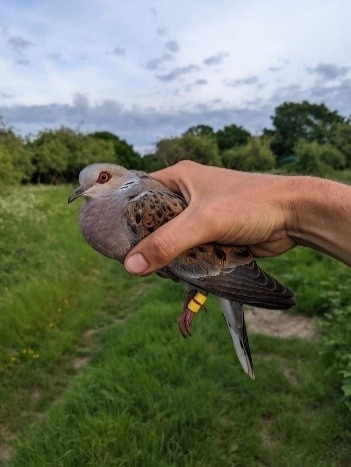
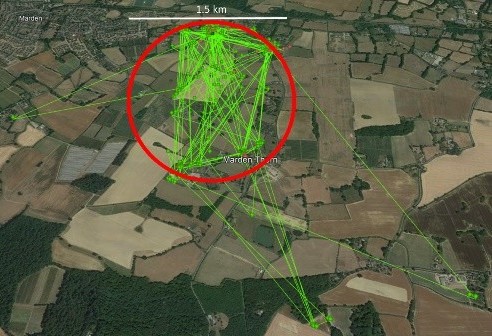
In 2023, George, for example, spent most of his time in a small area around his nest, approximately fifteen hundred metres across, on the edge of Marden – roughly what the textbooks say.
On the other hand, this year Adrienne has a nest in Bedgebury Forest, travels north to Staplehurst to feed close to the River Beult, and journeys south of Hawkhurst – we don’t know why yet – almost to the banks of the River Rother. So much for the ‘magic 300m’ they are supposed to need: perhaps they are being driven by changes in land use and the climate, or reasons we have yet understand.
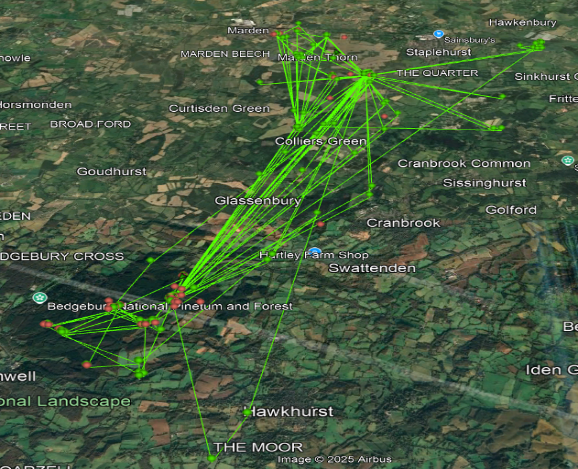
Whatever the reasons for their changing fortunes, and despite the many, many hours spent searching and waiting for them to fit the rings and tags, then gathering the data from them, it has been a pleasure working with landowners and others who care about these beautiful birds. I am privileged to have had in my hands birds, not much bigger than a blackbird, that have flown to and from Kent to sub-Saharan Africa as many as five times in their short lives.
Yet, along with bats, newts and even swifts, leaders of our two main political parties lay the blame for politicians’ inability to build new homes, on the shoulders of these remarkable creatures.